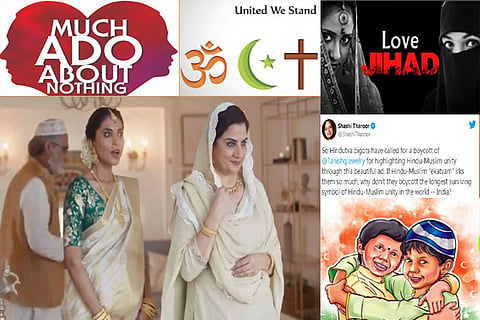

Chennai
So, what raised the hackles of the social media watchdogs in this seemingly innocuous ad? Since the mother-in-law was Muslim, and the woman Hindu, the objection was that it “promoted love jihad”.
Since the controversy broke out, the company – which had been threatened on Twitter – has taken down the film, going so far as to apologise to those whose sentiments were hurt by its messaging. Despite support pouring in from all liberal quarters and appeals to the company not to give in to trolls and bigots, the objection to what appears to be a well-made ad film points to the emergence of a very dangerous trend in India. On one side are creative individuals across the board, who are now compelled into reconsidering their narratives, out of the fear that it might offend the sensibility of one or the other religious group or community. On the other side, is a seemingly unstoppable army of trolls, naysayers, and fundamentalists who disguise their argument under the garb of morality and cultural policing. This isn’t the first time that makers of advertisement films have taken flak from such upholders of national or communal pride.
Almost seven years ago, the aforementioned jewellery company had released a progressive advertisement that featured a single mother preparing for her upcoming nuptials. Subsequently, a sister concern of that company went on to create another ad campaign featuring a protagonist with gender-fluid characteristics. While both these creatives were lauded for their stance that was representative of an evolving India that had space for everyone irrespective of sexual orientation or religion, the advertisements still received flak for portraying scenarios that fell beyond the expected heteronormative diktats of society or even attempting to showcase autonomy or agency of a woman, who did not live up to what was conventionally expected of her.
It is worth pointing out that the recently withdrawn jewellery advertisement cannot be faulted for violation of the advertising code issued under the Cable Television Networks Rules, 1994. The code mandates advertisements conform to the laws of the country and do not offend the morality, decency, and religious susceptibilities of subscribers. It prohibits ads of a wholly religious or political nature; mandating that ads are not directed towards a religious or political end, and that they do not contain references that hurt religious sentiments. By that logic, wouldn’t it be appropriate to ask how major political parties have managed to bypass all these laws, and go on an overdrive of publicity during election season?
But we digress. In the age of trial by social media, lies a fundamental question of who exactly is authorised to pass judgments on what can be considered offensive and what passes muster? And the bigger question is, where is this version of India we see on Twitter? It’s not in the narrow streets of Delhi when Hindu and Muslim families sheltered each other during the riots. It’s not our history books that are replete with tales of Mughals marrying Rajputs. And it’s not in the metros where inter-religion marriages are increasingly common. And if there indeed exists an India, where faceless trolls on social media can decide the narrative of a nation and find mal-intent in a message of communal harmony, then it’s time for some very deep soul-searching by all citizens who still have faith in the Constitution.
Visit news.dtnext.in to explore our interactive epaper!
Download the DT Next app for more exciting features!
Click here for iOS
Click here for Android